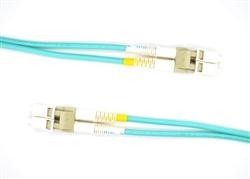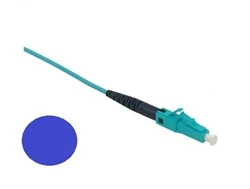Fiber optics offers a huge bandwidth capacity, with rates of up to 100 Gbps. Due to its glass fiber strands, which make it exceedingly difficult to "eavesdrop" or "tap" without causing obvious deterioration, it is regarded as a more secure kind of communication media by default. It may also be installed over large distances, with estimates ranging from 1 meter to 120 kilometers depending on the cable type. Fiber optic cable is appropriate for industrial applications and locations with variable power because it is immune to electromagnetic interference.
In many aspects, fiber optic cable surpasses conventional cabling, and it is the preferred data communication medium in industrial environments. Many considerations must be made while selecting the best fiber optic cable. One of the most crucial decisions to make is whether to install single-mode or multimode equipment. Because the distance, capacity, and budget of your network are all affected by this selection, it's critical to grasp the distinctions between these two types of fiber optic glass.
What are Single-mode and Multimode Fiber Optic?
Both work by reflecting light several times inside a glass core, which is how they work.
However, the fundamental distinction between them is in their structure. A single-mode fiber optic cable, by definition, transmits a single beam of focused light across a long distance. Multimode fiber optic cable, on the other hand, may send many light sources at the same time within the same glass core. As a result, multimode has more bandwidth. This isn't to say that multimode fiber optics are better than single-mode fiber optics. Both have their own applications and are connected over a network. As a result, you can't use them interchangeably.
Let's take a closer look at each one.
Multi-Mode Fiber
A large diameter glass core in a pre-terminated multimode fiber optic cable permits light to flow in numerous modes or routes. More light (basically data) can flow through the connection thanks to the various modes. At larger distances, however, light dispersion (light distortion) occurs, which might impede data transfers on the receiver end owing to imprecise, incomplete signals.

Characteristics of Multi-Mode:
- Larger core diameter, usually 50 – 100 Micrometers, (62.5 most common)
- Widely used cable in LAN networks today
- Easier to terminate
- Transmitters and receivers are more economical
- Used at shorter distances
Single-Mode Fiber
Pre-terminated single-mode fiber optic cable is made up of a thin glass core with only one mode or channel for light transmission. Single-mode, unlike multi-mode, features a single light beam rather than several light channels that reflect light off the cladding. There is less dispersion when there is no light reflection, hence light signals may be delivered across greater distances.

Characteristics of Single-Mode:
- Small core diameter, 8 to 12 microns
- Widely used cable in WAN networks today
- More difficult and costly to terminate
- Transmitters and receivers are more expensive
- Typically used over long distances
Which to choose?
The choice for choosing a single-mode or a multimode fiber depends on the following factors:
Application
Pre-terminated single-mode fiber optic cable can transmit light up to 100kms, whereas multimode fibers need additional circuitry at 300mtrs due to modal dispersion. So for a Wide Area Network, the single-mode fiber is applicable while for setting up a small interdepartmental or a multi-storey network inside a building, a multimode cable is more suited.
Cost
The cost of both cables of the same length has not much difference. However, the light source for single-mode fiber is a laser of 1550nm wavelength while the multimode fiber runs on multiple sources of LED bulbs of more than 850nm wavelength. The trans-receiver for transmitting the laser signals is costlier than the multimode trans-receiver. You can reduce the cost by opting for pre-terminated multimode fiber optic cables.
Wrapping Up
There are several differences between a pre-terminated multimode fiber optic cable and a pre-terminated single-mode fiber optic cable, as you may have guessed. Both enable a long-lasting and high-bandwidth data transfer. However, understanding their benefits and drawbacks enables you to make the best decision. A system architect can assist you in planning an appropriate network infrastructure when building up an infrastructure that meets your present needs while also being expandable in the future.







